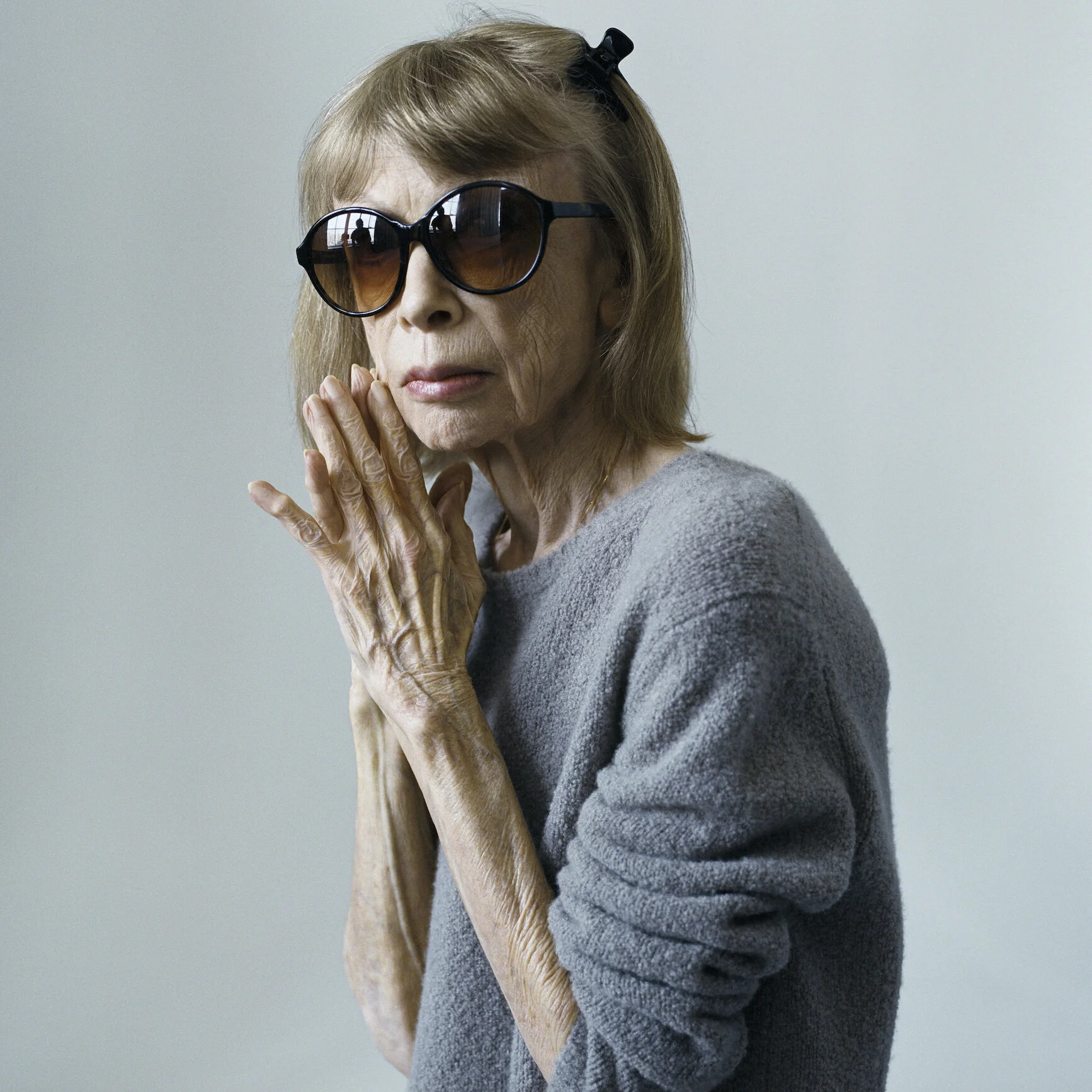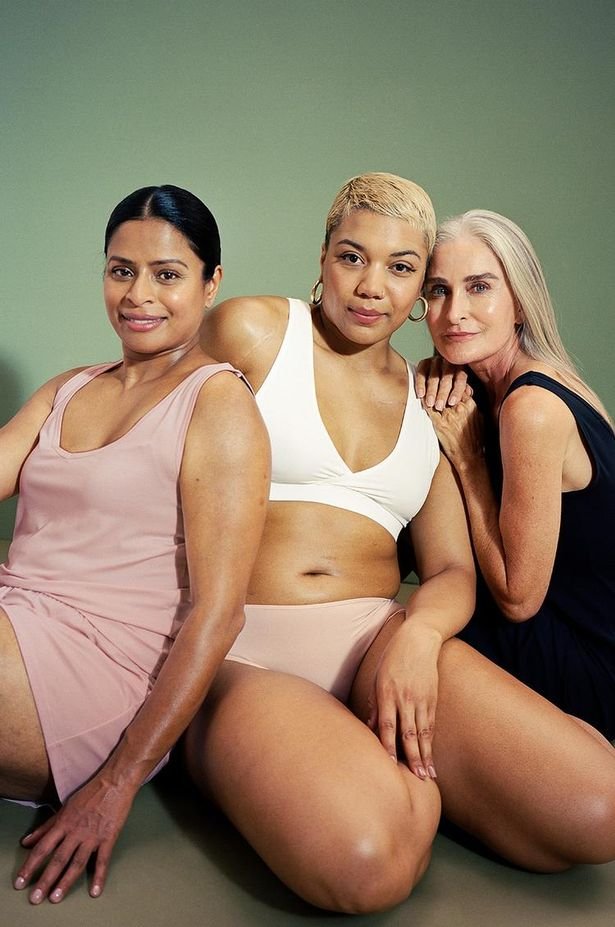The Imagery of Ageing
7 minute read
Actress Susan Sarandon once said that she looked forward to being older because “...what you look like becomes less and less an issue and what you are is the point.” I’m not sure the queen of pop, Madonna, would agree. Last month, the 63-year-old posted photographs on Instagram of her birthday celebrations, in which she looked a fraction of her age and like a blonde Kim Kardashian. The filtering of these pictures was as excessive as the photoshopping of the Louis Vuitton campaign she shot with Steven Meisel in 2009 and which caused a huge furore on social media as users unearthed alleged before and after images.
But whatever Madonna looks like in the flesh, the sexagenarian certainly presents herself to be as dynamic and potent as she was in her 20s and 30s. A couple of years ago, I was lucky enough to attend an H&M x Jeremy Scott collaboration launch party in London. My peers and I slunk sleepily back to our hotel rooms before midnight, but we saw on social media the next day that Madonna had rocked up to the party at 2am. Respect, I thought, while secretly hoping she’d had a nap that afternoon.
Madonna on her 63rd birthday
The singer’s relationship with ageing is a curious one. In a 2016 speech at a Billboard Women In Music event, the mother of six announced that for a woman in the music industry “to age is a sin”. But instead of using her platform to age more naturally and demonstrate that women shouldn’t be expected to look the same at 63 as they did at 33, she’s done her level best simply not to age at all, or at least not to appear to. But no matter how hard she, or any one of us, tries to hold back the years, our bodies don’t look the same or perform the same when we age. That’s just a fact, and it’s one that even Madonna has had to accept. During her most recent tour, Madame X, she was forced to cancel the last show of her North American tour in December 2019 due to unspecified injuries. The singer announced on Instagram: “I never quit, I never give in, I never give up! However this time I have to listen to my body.” She subsequently pulled out of a show in Lisbon and another in London the following month due to ongoing pain.
Madonna sets an extremely high bar for women of any age, let alone her own peers. I used to view her as an exception to the rule, an anomaly, a woman with an iron will, steely focus and perfectionist standards above anyone else’s.
But this image of older women as beautiful, youthful, sexual, athletic and desirable now seems to me to be the only one being delivered by the fashion and beauty industries. It’s as if we’re being told that it’s okay to be 60 as long as we look 35. It’s fine to shout about being 50-something as long as our bodies rival that of a 20-something.
Just look at Cindy Crawford on the cover of last weekend’s Sunday Times Style magazine. At 55, she’s modelling bodycon, and every inch of her face and figure is as flawless as her 20-year-old model daughter’s.
When Gloria Steinem announced:“This is what 70 looks like”, I’m convinced she was referring to a certain vitality, spirit, intellect, enthusiasm and engagement that older women embody, but have never been credited with. This is what makes a woman appear ageless, not full lips and narrow hips. This article is not intended as a criticism of Madonna, or any woman like her, it’s a criticism of a one-size-fits-all depiction of ageing. Women have always been boxed into caricatures by broader society; be that the virgin, the whore, the homemaker or the man-hater. But we’re all nuanced, individual beings. Not every woman wants to, or can, look like Madonna or Cindy Crawford or any of those other celebrities who are eulogised for their youthful looks (J-Lo, Michelle Pfeiffer, Dolly Parton, Jane Fonda etc).
What we need to see are images of older women which tell us that looking good does not equate to looking young. I think the Hyundai advert Jennifer Stevens wrote about last week goes some way to addressing this.
Of course, it’s a very good thing that over the past five years or so, older women have become more visible in marketing and advertising campaigns, but how they are being represented does need further scrutiny. In a paper published by the Cambridge University Press in February, which focused on L’Oreal UK and Ireland web advertisements, and how they use older celebrities to redefine ageing, it was found that the ads “promote new discourses about ageing in which older women’s sexuality is presented as a form of power”. The study went on to explain that in fact “the underlying discourse pathologises ageing and presents [it] as something which can be evaded through the consumption of cosmetics”.
This portrayal of “eternally youthful seniors” simply perpetuates ageist attitudes because those of us who age less “successfully” are left feeling we’re in need of fixing (through the purchase of products of course).
I put this to Dublin-based fashion stylist and creative director Jan Brierton, who became an accidental poet during the pandemic, and now has a published anthology to add to her many other creative achievements. As a professional who regularly books models for both editorial and commercial work, and as a woman in midlife, Jan is incredibly engaged in the narrative around how older women are represented.
“What we’re seeing is the homogenisation of ageing,” she explains. “It can only look a certain way, but why can’t natural ageing be aspirational? The media industry needs to start having this conversation, because every one of us is on the ageing train.” One of the poems in Jan’s book, What Day Is It?, is called “Elastic Skin” and it was inspired by the words she kept seeing on cosmetic boxes and tubes – “age defence”, “plump and prime”, “turn back time”, for instance. The last paragraph of her poem eloquently reads: “‘I haven’t seen you for ages. You look bloody fantastic.’ ‘Aw thanks. I’m using all of these creams To keep my skin elastic.’”
Joan Didion for The New York Times
“This is how we talk to each other,” Jan exclaims. “As women we need to rethink how we communicate with one another.” She’s right, and the importance of how older women relate to each other around the issue of ageing reminds me of an article I read on the Daily Mail website a few years ago in which the 74-year-old female writer and former model described the 70- and 80-somethings who had been photographed for major advertising campaigns (Joan Didion for Céline and Joni Mitchell for Yves Saint Laurent among them) as having “all sagging skin and lifeless hair”. I think her use of the word “lifeless” in this context bothered me more than anything because that’s what we most fear as aging women isn’t it? That we’ll be viewed as individuals who are dead inside and dead to society; useless, of no worth and with no power. When I looked again at the Céline and Yves Saint Laurent campaigns, I thought they captured beautifully exactly what I’ve been speaking about in this piece: the intelligent, experienced, individual and unapologetic essence of ageing women. And this is something that looks really beautiful to me.
Have we regressed in the past six years? Sometimes it seems that way. Here in Ireland, we’ve yet to fully tackle the issue of visibility let alone look at the nuances of it, as older women consistently fail to appear in many of our flagship stores’ seasonal events and shows. Given that the majority of their customers are women over 40, why are they afraid to reflect their own customers’ faces in their campaigns and store activities? Jan agrees this is a huge problem and has often had a creative pitch rejected by a client because of her suggestion to book an older model, she tells me.
Caryn Franklin via Who What Wear
Former host of The Clothes Show, Caryn Franklin, who describes herself as a fashion and identity commentator and agent of change, walked in an Art School London runway show at London Fashion Week last year. On her Instagram feed, the 62-year-old described the show as a “joyous gathering of diverse humans...in a dream lineup of bodies and identities. This is the power of fashion to breakthrough formats and fixed mindsets on what it is to be you/me...” This brings us nicely back to Susan Sarandon’s wise words. It’s what we are, it’s what it is to be you and me that makes older women brilliant, beautiful, intriguing and enthralling. It’s also the curious artistry of ageing. It’s time we started really seeing what 60, 70 and 80 look like.
Marie Kelly, September 2021
what do you think dear reader? tell us in the comments below
join the conversation
share and comment below, we’d love to hear your thoughts…













